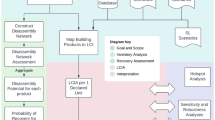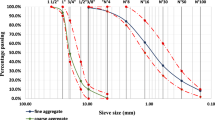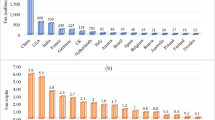Abstract
As existing bridges continue to deteriorate, the Korean Ministry of Construction and Technology (MOCT) including each State Department of Transportation (DOT) in the U.S. faces increasing demands on the limited funds available for bridge maintenance. In such circumstances, highway bridge owners need realistic and effective deterioration models to find the deterioration rate for present and future condition of the bridge deck and to estimate the end of service life of the bridge. The MOCT recently make it mandat ory that life cycle cost analysis (LCCA) for value engineering be used to all government, construction projects including private se ctor projects over 10billion won in terms of Korean currency., In the LCCA concept, it is important to estimate the end of service li fe of the bridge. Several models are available to predict the deterioration rates of bridge main structure such as deck, superstructu re, and substructure. This paper presents a new model that predicts the end of service life in concrete bridge decks based on (i) the deterioration rate and (ii) the condition rating for decommissioning. This paper proposes the deterioration models of concrete bridge decks for 30 DOTs. The data required for developing the models was obtained from the National Bridge Inventory (NBI) database. Whereas, the additional data required for this research were collected through a questionnaire survey. Statistical linear regre ssion method was used to analyze the deterioration models of concrete, bridge decks for each DOT.
Similar content being viewed by others
References
Abed-Al-Rahim I. J. and Johnston, D. W. (1995). Bridge element deterioration rates.Transportation Research Record 1490, Transportation Research Board. Washington, D.C., pp. 9–18.
American Association of State Highway and Transportation Officials (1993). Guidelines for bridge management systems. AASHTO Washington, D.C.
Chen C. J. and Johnston, D. W. (1987). Bridge management under a level of service concept providing, optimum improvement action, time, and budget prediction. Rep. No. FHWA/NC/88-004, Ctr. for Transp. Engrg. Studies, Dept. of Civ. Engrg., North Carolina State University, Raleigh.
Dell'lsola, A. J. and Kirk, S. J. (2003).Life Cycle Costing for Facilities. Reed Construction Data, Construction Publisher & Consultants.
Devore, J. L. (2004). Probability and statistics for engineering and the sciences, 6ty edition. Brooks/Cole-Thomson Learning: Duxbury, Belmont, CA.
Estes, A. C. and Frangopol, D. M. (2001). “Bridge lifetime system reliability under multiple limit states”Journal of Bridge Engineering, ASCE, Vol. 6, No. 6, pp. 523–528.
Federal Highway Administration (1995).Recording and Coding Guide for the Structure Inventory and Appraisal of the Nations Bridges Report No. FHWA-PD-96-001, Washington, D.C.
Federal Highway Administration (2000).1999 Status of the Nation's Highways, Bridges and Transit: Conditions and Performance, Report to Congress. Federal Highway Administration, Washington, DC.
Fitch, M. G.., Weyers, R. E., and Johnson, S. D. (1995). “Determination of end of functional service life for concrete bridge decks.”Transportation Research Record. 1490, pp. 60–66.
Frangopol, D. M. and Estes, A. C. (1997). “Lifetime bridge maintenance strategies based on system reliability”.Structural Engineering International, SEI, Vol. 7, No. 3, 193–198.
Frangopol, D. M., Kong, J. S., and Gharaibeh, E. S. (2001). “Reliability-based life-cycle management of highway bridge”.Journal of computing in civil engineering, ASCE, Vol. 15, No. 1, pp. 27–34.
Hong, T. (2003). Evaluation of Maintenance, Repair, and Rehabilitation strategy in concrete bridge deck, M.S. Thesis, Purdue University, West Lafayette, IN.
Itoh, Y. and Liu, C. (1999). Multiobjective optimization of bridge deck maintenance, In Case Studies in Optimal Design and Maintenance Planning of Civil Infrastructure Systems, D. M. Frangopol, ed. ASCE, Reston, Virginia, pp. 136–151.
Jiang, Y., Saito, M., and Sinha, K. C. (1988). “Bridge performance prediction model using the markov chain”.Transportation Research Record, 1180, pp. 25–32.
Jiang, Y. and Sinha, K.C.. (1989). “Bridge service life prediction model using the markov Chain”.Transportation Research Record, 1223, pp. 24–30.
Morocous, G., Rivard, H., and Hanna, A. M. (2002). “Modeling bride deterioration using case-based reasoning”.ASCE, Journal of Infrastructure System, Vol. 8, No. 3, pp. 86–95.
Morrow, T. L. and Johnston, D. W. (1994). Bridge maintenance level-of-service optimization. Rep. No. FHWA/NC/94-004, Ctr. for Transp. Engrg. Studies, Dept. of Civ. Engrg., North Carolina State University, Raleigh, N.C.
Neter, J., Kutner, M. H., Nachtsheim, C. J., and Wasserman, W. (1996). Applied linear statistical models. Fourth Edition, WCB/McGraw-Hill, New York, NY.
O'Connor, D. and Hyman, W. (1989). “Bridge management system.”Final Rep., Demonstration Project 71, Ofc. of Technol. Applications, Fed. Hwy. Admin., U.S. Department.
Ramey, G. E. and Wright, R. L. (1994). Assessing and enhancing the durability/longevity performances of highway bridges. Final Report on Highway Research Record. Ctr. Proj. 2-13506, Auburn University, Alabama.
Ramey, G. E. and Wright, R. L. (1997). “Bridge deterioration rates and durability/longevity performance”.Practices Periodical on Structural Design and Construction, ASCE, Vol. 2, No. 3, pp. 98–104.
Saito, M. and Sinha, K. C. (1989). The development of optimal strategies for maintenance, rehabilitation and replacement of highway bridges, Joint Transportation Research Program, Final Report Vol. 5, Purdue University, West Lafayette, IN.
Sobanjo, J. O. (1993). Deterioration models for highway bridges. Proceeding of the Infrastructure Planning and Management Conference, ASCE, New York, NY, USA. pp. 387–392.
Stukhart, G., James, R. W., Diaz, A. G., Bligh, R. P., Sobanjo, J., and McFarland, W. F. (1991). Study for a comprehensive bridge management systems for Texas. Rep. No. FHWA/TX-980/1212-IF, Texas Transportation Institute, College Station, Tex.
Tuner, D. S., Richardson, J. A., and Wong, K. S. (1991). Development of bridge deterioration models for the ABIMS. Interim Rep. No. 3, Bureau of Engrg. Rep. 548-39, Univ. of Alabama, Tuscaloosa, Ala.
Xanthakos, P. P., (1996). Bridge strengthening and rehabilitation, Prentice Hall PTR, Upper Saddle River, New Jersey.
Author information
Authors and Affiliations
Corresponding author
Rights and permissions
About this article
Cite this article
Hong, TH., Chung, SH., Han, SW. et al. Service life estimation of concrete bridge decks. KSCE J Civ Eng 10, 233–241 (2006). https://doi.org/10.1007/BF02830777
Received:
Accepted:
Issue Date:
DOI: https://doi.org/10.1007/BF02830777




